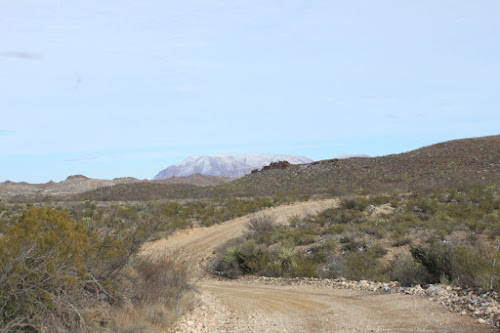This short trail follows the bank of the Rio Grande as it cuts through the Mesa De Anguila. It's a short hike, but the stunning views in the canyon make this hike one of the top attractions of Big Bend.
The trail starts off from the parking lot with the canyon clearly ahead. Given the close proximity to the river there is lush vegetation in the area, including some trees and plants that you will not find elsewhere in the park.
The waypoint "Creek Cross" marks the point at which the trail crosses Terlingua Creek. On our visit this creek was completely dry, so it presented no barrier us. However, if you visit during a wetter month pay close attention to this area as the creek may be too deep and swift for safe passage.
The close proximity to the river makes the desert floor bloom. The Mexican side of the canyon looms ahead.
Upon arriving at the mouth of the canyon there are a series of switchbacks in the rock at the spot marked with the waypoint "Steps". Many of the switchbacks are reinforced with concrete and some include hand railings, which makes the going much easier.
When you reach the top of the switchbacks take a look back to the north and see the Chisos Mountains in the distance. Look across the Rio Grande and see Mexico a few hundred feet away. Depending upon the season in which you visit the Rio Grande may not look all that grand. It seems odd that the river carries enough force to have carved such a canyon. The secret lies in the fact that the mesa is constructed of limestone, a relatively soft rock and the Rio Grande is heavily loaded with sediments and sand, which act as an efficient scouring agent eating away at the rock.
The trail follows the Rio Grande upstream. The trail hugs a ridge in the canyon wall on the American side of the river. At the waypoint "Overlook" there is a fine spot to view the river both up and downstream. This is the point at which a lot of visitors turn around because the trail from here is rougher and harder to follow.
While the trail along the canyon up to this point hugged a ridge, from here on out the trail will drop down closer to the river and follow a real river bank. Instead of bare rock you'll go through thick clumps of trees and bushes with dirt and sometimes sand under your feet. This narrow belt of life along the river plays host to a wide variety of plants such as Cane and Willow trees.

















































